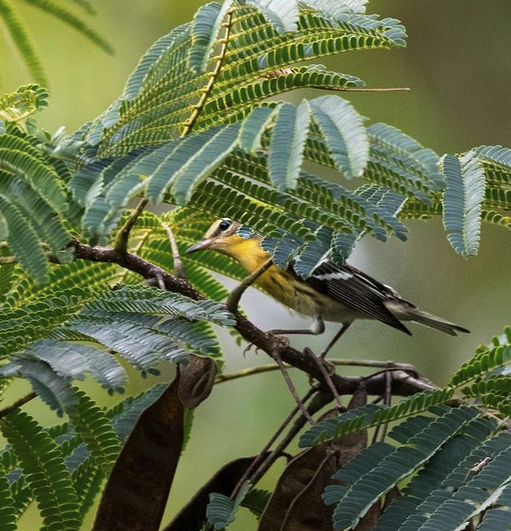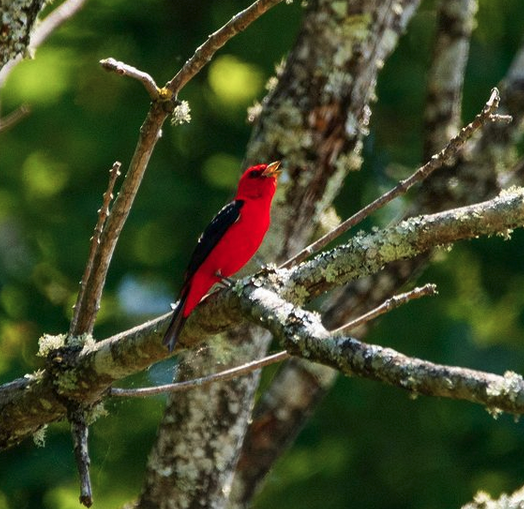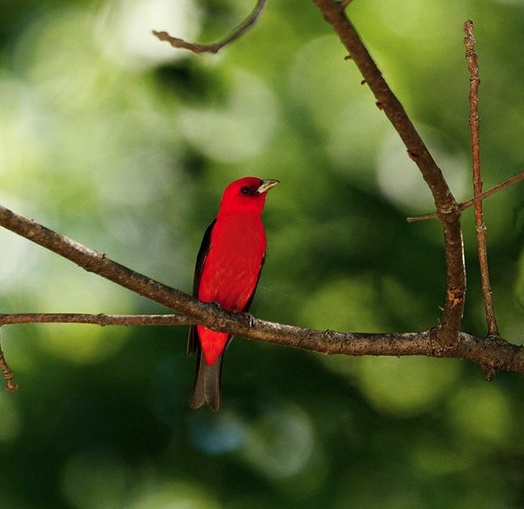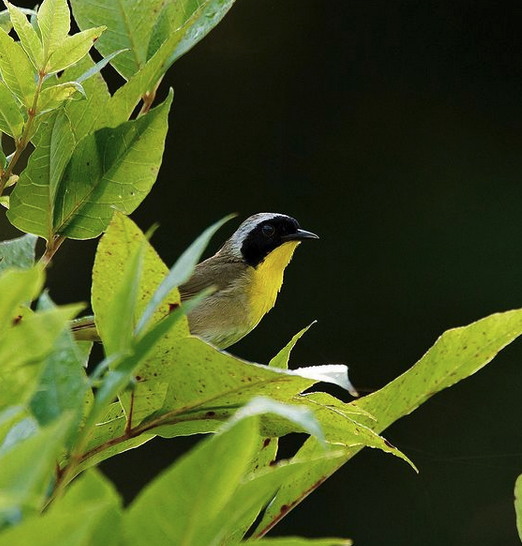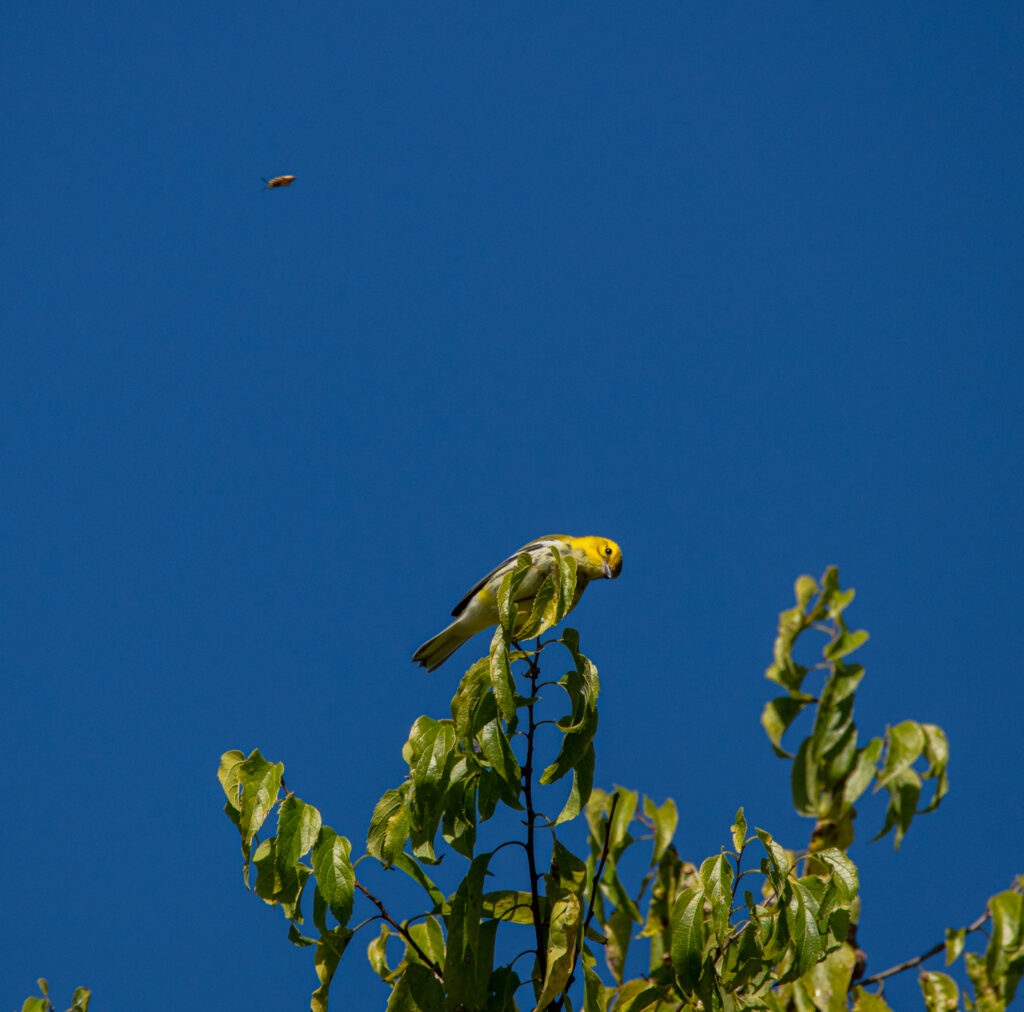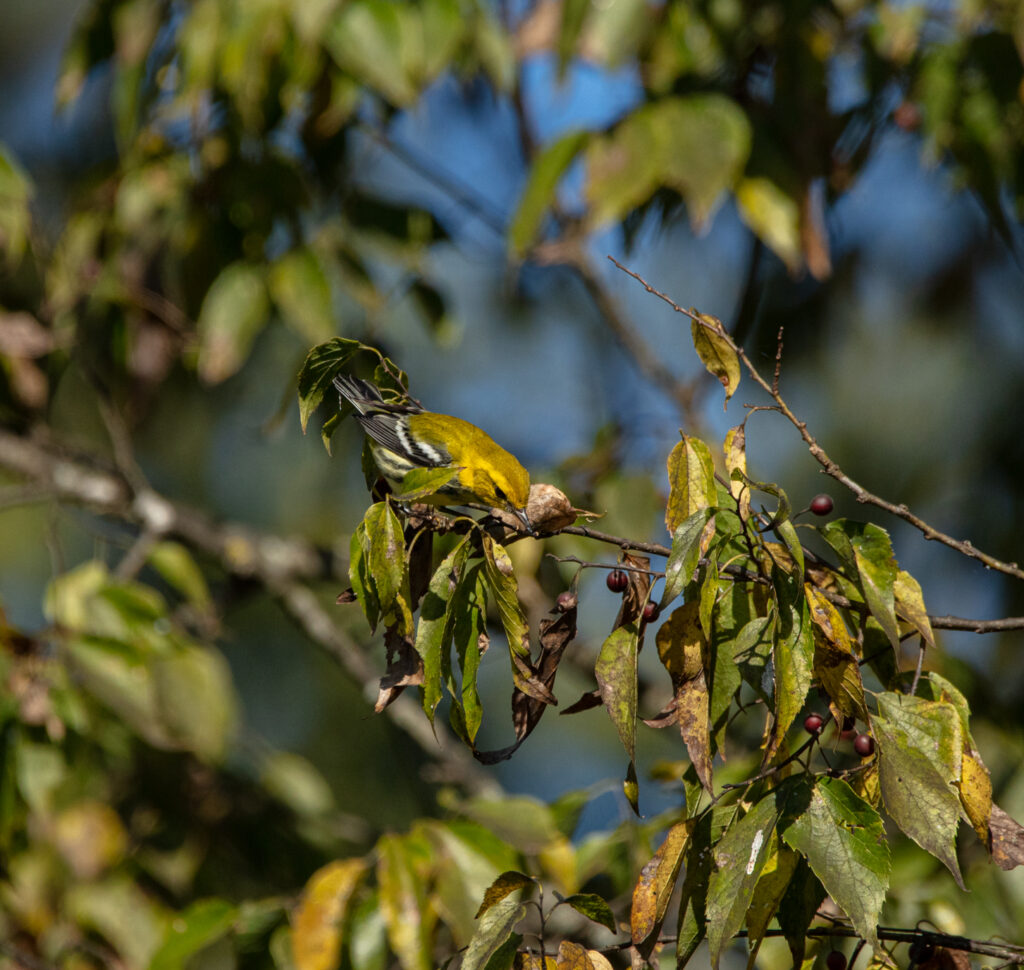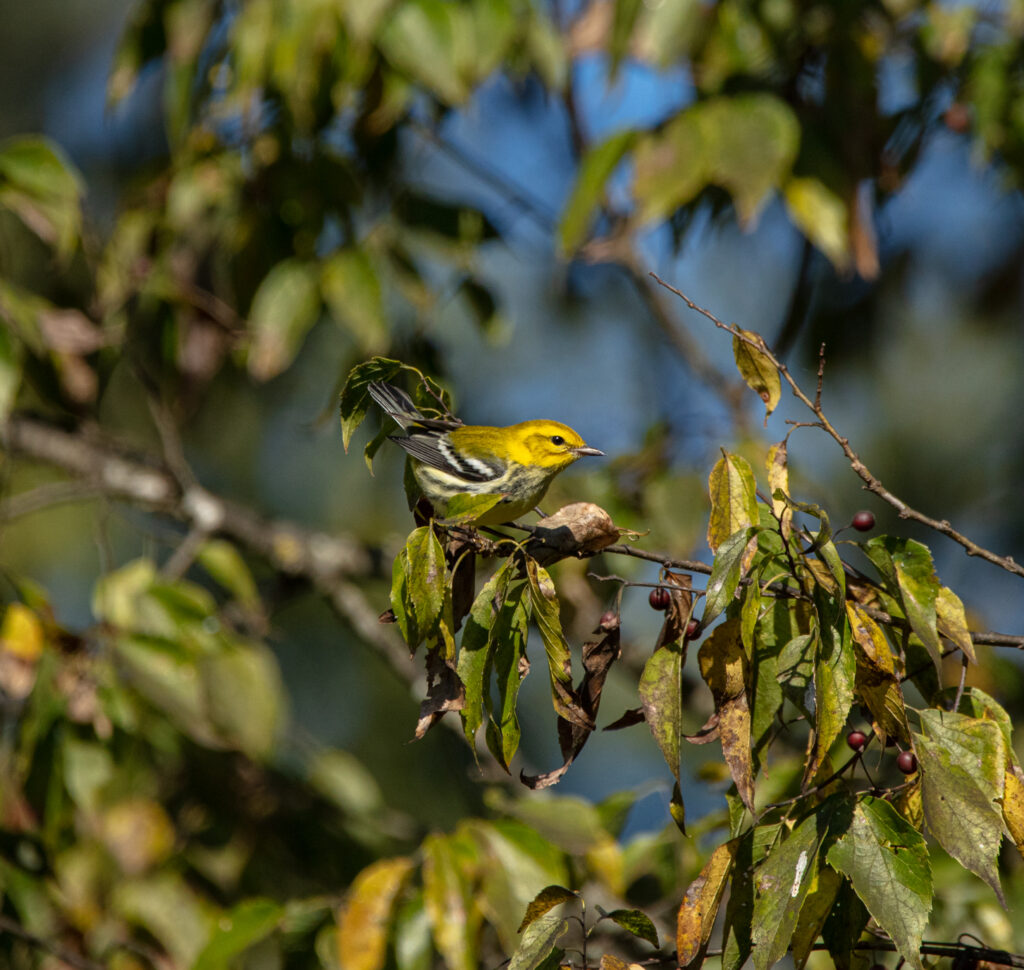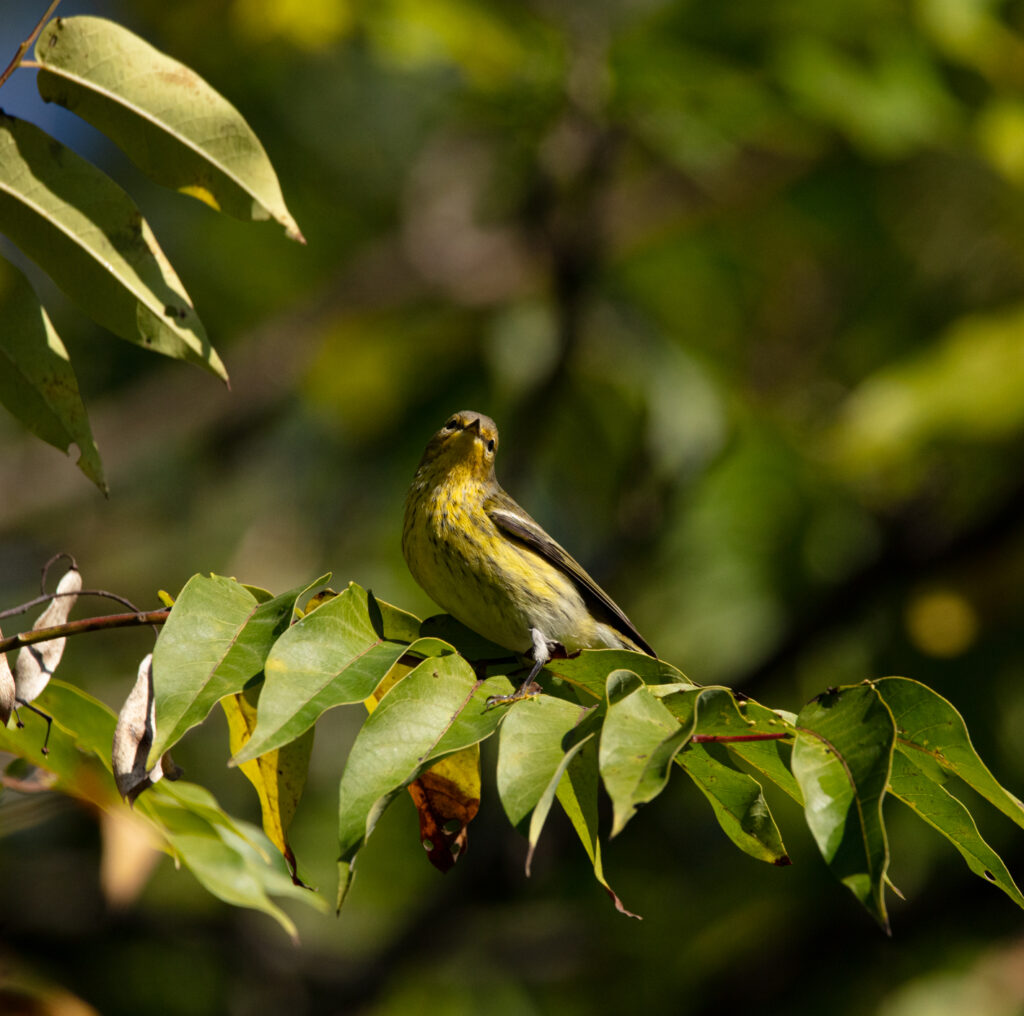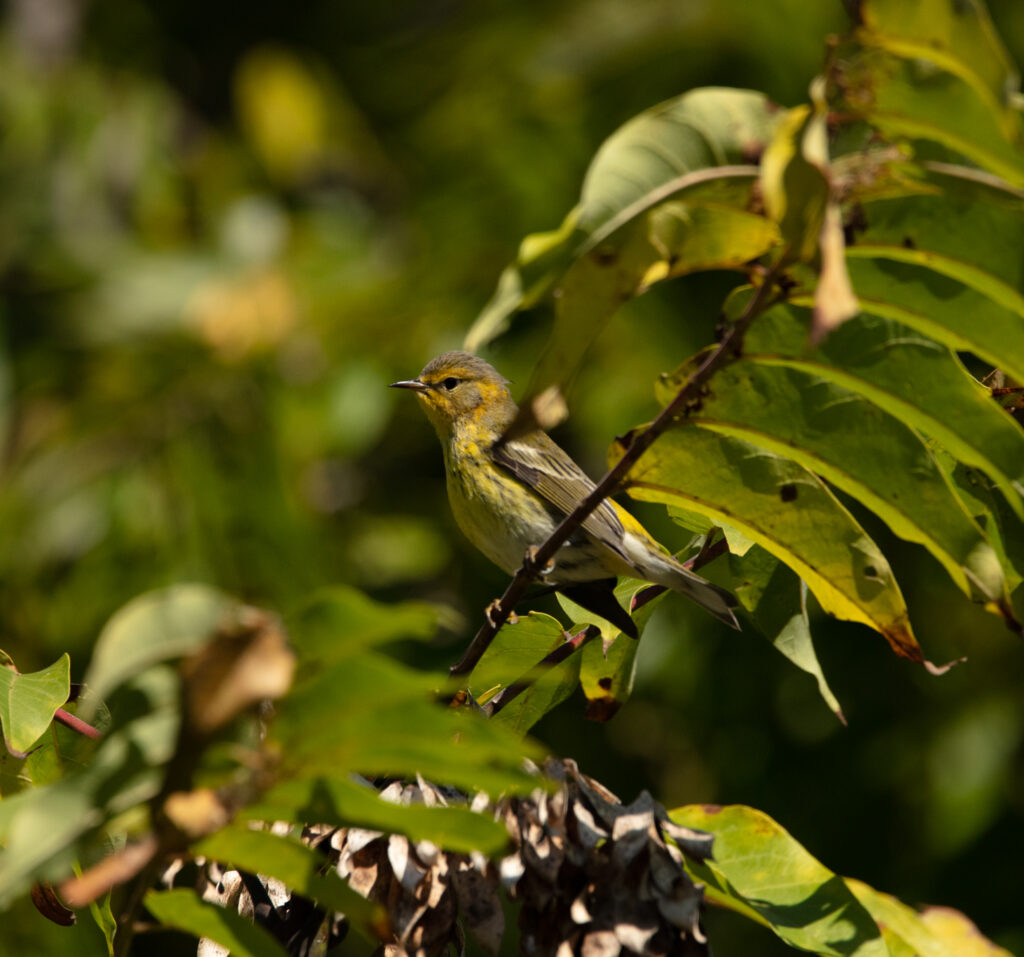Autumn migration is an exciting time. It brings the opportunity to be surprised and delighted with unexpected finds when we step outside to go birding.
Case in point, this lovely Blackburnian Warbler. I encountered the one featured in the first 3 photos recently at the Old Bynum Bridge in Pittsboro NC while it was hunting for a meal in the trees.
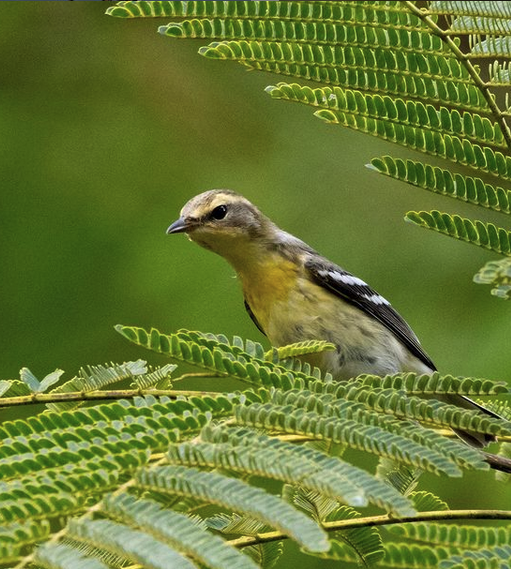
As you can see, the Blackburnian Warbler goes through some pretty big changes appearance-wise during the fall. Their familiar bright orange, white and black breeding plumage (as seen in the last photo in this post which was taken in June) are replaced with a muted palette of warm grey, soft grey and charcoal tones.
Though the Blackburnian isn’t as showy this time of year, I think they are still a lovely sight.
Nesting exclusively in boreal forests, Blackburnian Warblers are a summertime resident in the higher elevation areas of western North Carolina. Elsewhere across the state they occur as migratory visitors just passing through.
The best way to see them is to head out to the Appalachians during late April and early May when the breeding season gets underway. At this time, the trees haven’t fully leafed out yet so they’re somewhat easier to find when singing at the treetops.
Back here in the Triangle, we’ve just got a few weeks left to spot these beauties before they head south to the mountain forests of the Andes mountains in South America.
Photos by @sally_siko of @birdwatching_nc on the mighty @canonusa
#5ds


